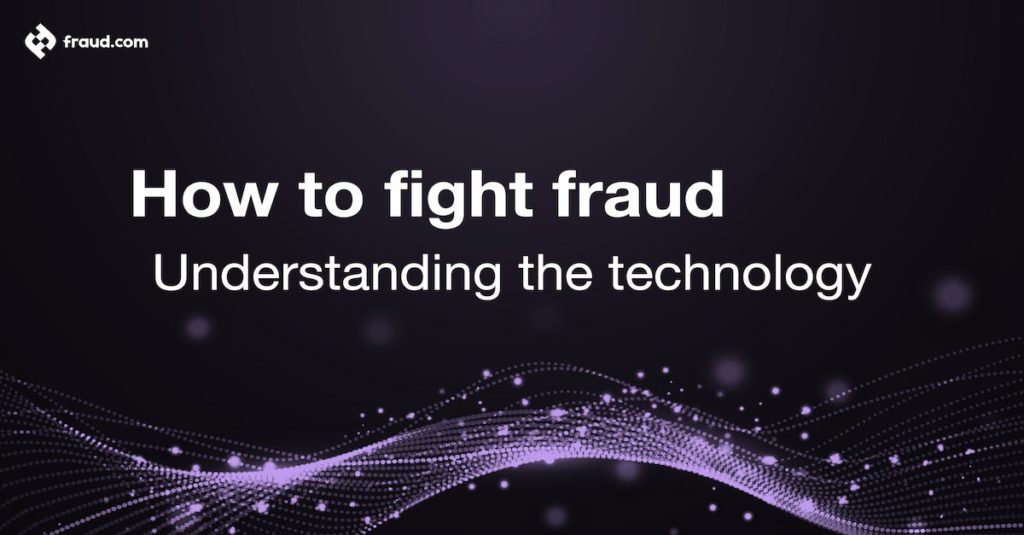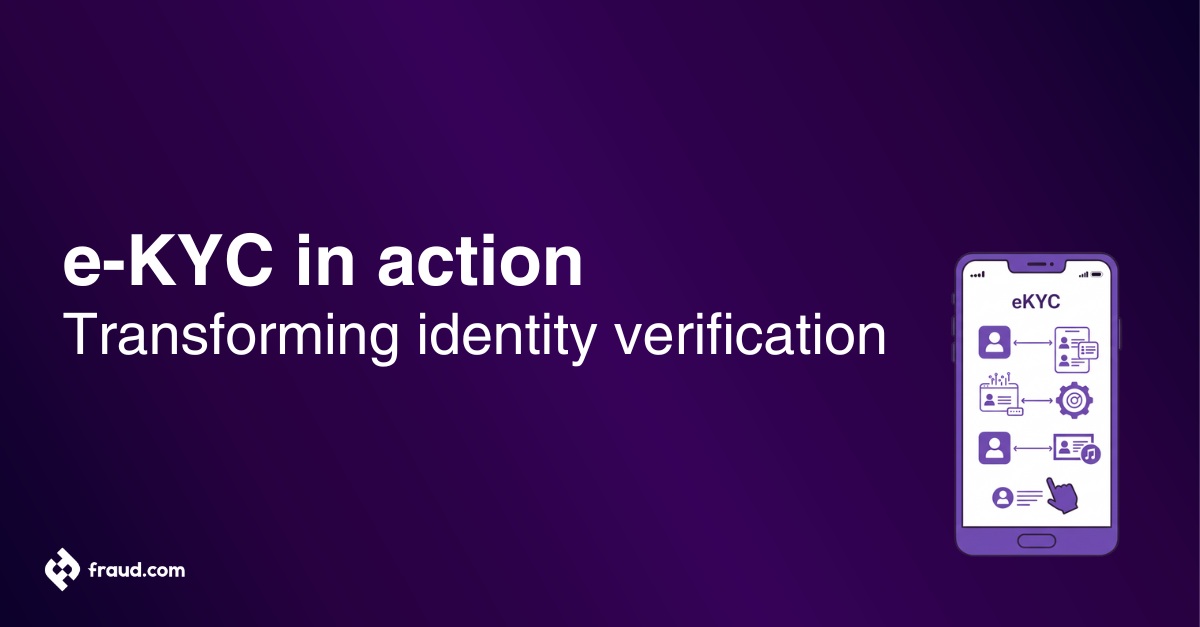Fraud is a constant challenge for any organisation. To stay ahead of the game and reduce fraudulent activity as much as possible, organisations should understand how technology can be used to fight fraud.
Fraud prevention technology has a role to play in any fraud management strategy, but the way it is used varies depending on the industry and sector you’re working in. The challenges posed by fraudulent activity are distinct for every sector.
The advent of technology has made it easier for fraudsters to commit financial crimes than ever before. Organisations have responded by implementing new technologies to combat fraud and reduce the risk of being a target.
Anti-Fraud technology can be used in many ways to detect and prevent fraud. With the enhancement of anti-fraud technology, we can enable many other types of fraud prevention and detection. In this blog post, we’ll explore how technology is used to prevent fraud: understanding the different types of technology that are commonly used to combat fraud, and what their benefits are.
Table of Contents
ToggleFraud Risk Management
Fraud Risk Management is the process of identifying, assessing, and prioritising the risk of fraud in business activities to reduce the potential impact on the organisation. The goal of FRM is to prevent fraud from happening, detect it as early as possible, and correct the situation as quickly as possible if fraud is detected. To start on the journey of implementing a fraud risk management system in your organisation, it is important to assess the current state of affairs.
The first step is to conduct an internal audit to identify the risks associated with your organisation’s activities. Then, you can start to develop a system to mitigate these risks. By implementing a fraud risk management system, companies are better equipped to identify warning signs and minimise the risk of internal or external fraud. There are several types of technology that can be implemented to help with fraud risk management, including data collection and analysis, artificial intelligence, and endpoint security.
The use of Machine Learning (ML) in fraud detection
Machine learning is a type of artificial intelligence used to detect patterns in data and make predictions with the data in fraud detection systems. It’s used in fraud detection and prevention in a variety of fields, including healthcare, insurance, and financial services. As fraud comes in many forms, companies use machine learning to help identify and prevent fraud in their systems and protect their customers from identity theft and financial loss when suspicious activity is detected.
Computer programs that learn from data to predict future events are called machine learning. In the context of fraud prevention, ML algorithms can be used to identify patterns in data that are indicative of fraudulent activity. For example, a company might use an ML algorithm to process daily credit card transactions and look for abnormal spending patterns that indicate a risk of fraud, making it easier to spot fraudulent transactions.
What does ML do in Fraud Prevention?
Computer programs that learn from data to adapt to specific circumstances are called artificial intelligence. AI algorithms are capable of advanced reasoning and can be programmed to make decisions. In the context of fraud prevention, AI algorithms can be used to train ML algorithms to recognize patterns in data that are indicative of fraudulent activity. For example, a company might use an AI algorithm to program an ML algorithm to learn from daily credit card transactions and recognize normal spending patterns that indicate risk of fraud.
The use of Artificial Intelligence (AI) in fraud prevention
Artificial intelligence (AI) is a branch of computer science that involves designing computer systems with the ability to perform tasks that are normally performed by human intelligence. AI is already being used in various industries to improve the efficiency and accuracy of work. AI is widely used to reduce the risk of fraudulent activities.
Artificial Intelligence has the capability to make decisions and process information much faster than humans, making it an ideal tool for fraud prevention. It can continuously scan transaction data for anomalies and flag any activities that seem to deviate too far from normal patterns. AI was first implemented in the financial services industry to fight against online fraud, but it’s now being used to combat fraud in many other fields where data analysis is key.
What does AI do in Fraud Prevention?
AI enables businesses to process and analyse more data than ever before. This data can come from various sources. By analysing data, AI systems can make predictions and draw conclusions. For example, AI can identify patterns in the behaviour of customers to determine if they are likely to commit fraud or not.
How are biometrics used in fraud prevention?
Biometrics is an advanced form of identification that works by measuring and analysing biological characteristics such as fingerprints, eye retinas, or facial features. Unlike traditional identification methods, biometrics cannot be faked or stolen. In the financial industry, biometrics is most often used for authentication purposes.
Authentication is the process of proving that a person is who they say they are. Biometric Authentication is used as a passworldless method of authentication, offering a more secure method of identification than a traditional password. With this form of identification, it is nearly impossible for a third party to steal your identity. There are many benefits to using biometric authentication.
The biggest advantage is that there is no risk of someone stealing your password and logging into your account. Additionally, this form of identification is convenient. You won’t have to worry about forgetting your password as you can simply log into your account with your face. There is also no risk of someone stealing your biometric data and logging into your account.
Rule-based fraud prevention systems
Rule-based systems are used in many fraud prevention systems to detect abnormal behaviour or highlight activities that are outside of normal patterns of behaviour. In order to be effective in this regard, rules must be created that outline what is “normal” and what is abnormal. This is where things can get a bit sticky with regard to data profiling and the building of rules-based systems.
In order to create rules that outline what is normal and what is abnormal, the system must first be aware of what is normal. Therefore, the data profiling phase becomes even more important. There are several different types of rules that are typically used in fraud prevention systems.
Some rules will be based on transaction volume and others will be based on the value of transactions. There are also rules that might be based on the length of time that a customer has been engaged in a particular type of transaction. One example of a rules-based system might be a transaction limit based on the currency value of goods purchased.
Fraud Orchestration
It is very important for businesses to have a fraud orchestration system in place to reduce the risk of fraud happening within the company. A fraud orchestration system will collect and analyse data from across the entire business to look for patterns and signs of risk. If the system detects something that could lead to a fraud taking place, it will send an alert to the right party to take action.
Fraud Orchestration unifies all anti-fraud systems under one view. This means that your company’s anti-fraud software will be able to communicate with each other and work towards the same goal. The system will collect data from all of your current anti-fraud systems and put them into one place.
This will allow you to see everything at once, instead of having to go from system to system. This will make it easier to fight fraud as comprehensive data analysis is the key to fighting fraud. You will be able to see everything at once and make decisions in one place, in real-time. This will make it easier for you to see what you are up against as it allows you to view all the anti-fraud data in one place.
Fraud orchestration provides a centralised platform that allows you to view all the data in one place. Fraud Orchestration provides a unified API that connects all systems. This lets you run rules against data from any system, it lets you keep rules up to date. It lets you set rules to change based on inputs from another system.
It lets you set rules to change based on pattern recognition. It lets you schedule rules to run at a certain time. It lets you set rules to change based on other rules. It lets you load rules from a different system. It lets you set rules to change based on external inputs like stock prices.
The possibilities are limitless. Find out more about Fraud Orchestration here.
Why is it important to have a robust fraud detection and prevention infrastructure?
Overall, having a robust fraud detection and prevention infrastructure in place can significantly reduce the risk of company financial losses and operational disruption due to fraud. There are many ways to do this, including monitoring transaction patterns, setting up rules based on transaction type and amount, data enrichment, and setting up anti-fraud controls by incorporating artificial intelligence and machine learning into your tools to help them scale and continuously improve their accuracy. You can also build custom rules and rules engines into your tools.
By understanding which operational processes are most exposed to fraud and having the right fraud prevention and fraud detection technology in place, your organisation can significantly increase its detection capabilities, cut down on the number of false claims, and minimise the cost and time it takes to investigate potential fraudulent activity.
Find the most suitable anti-fraud technology here.









